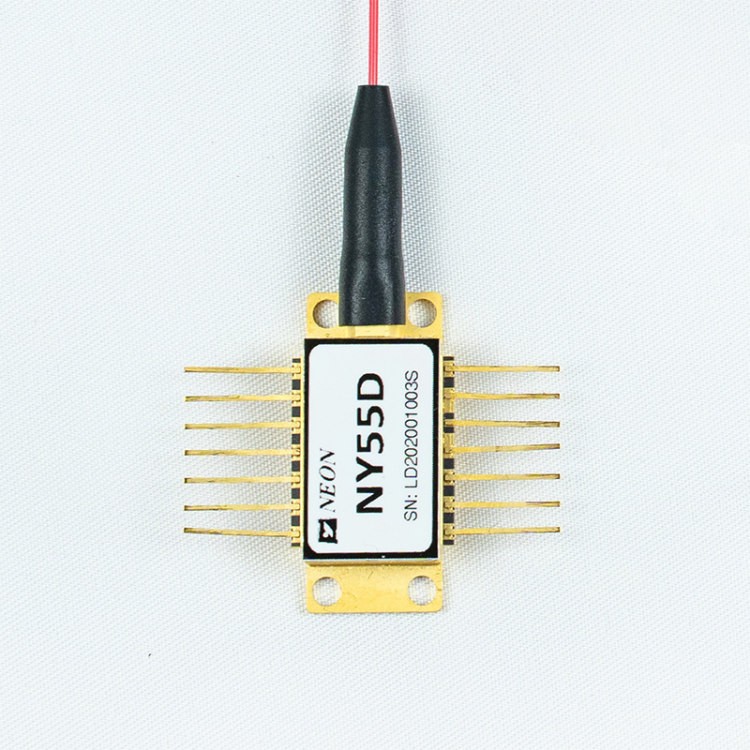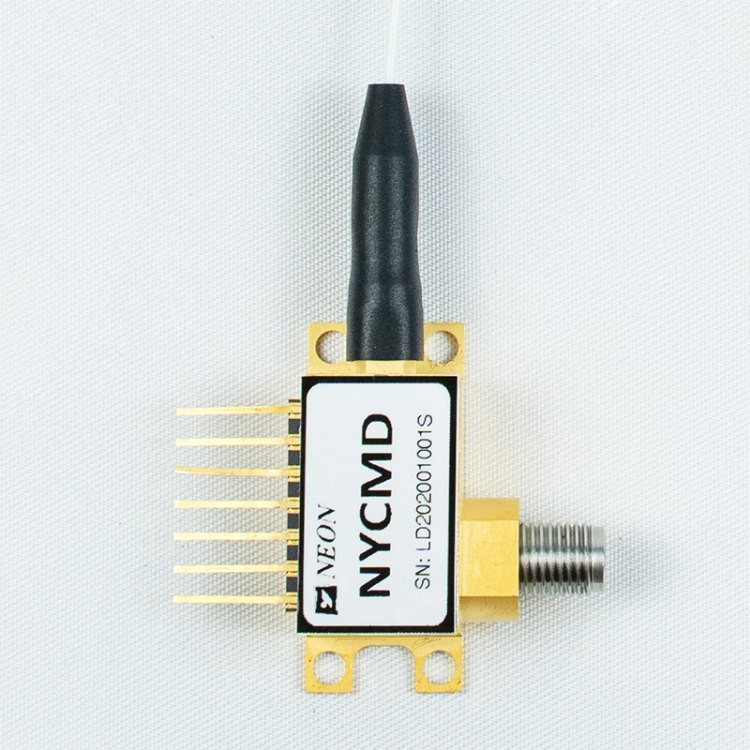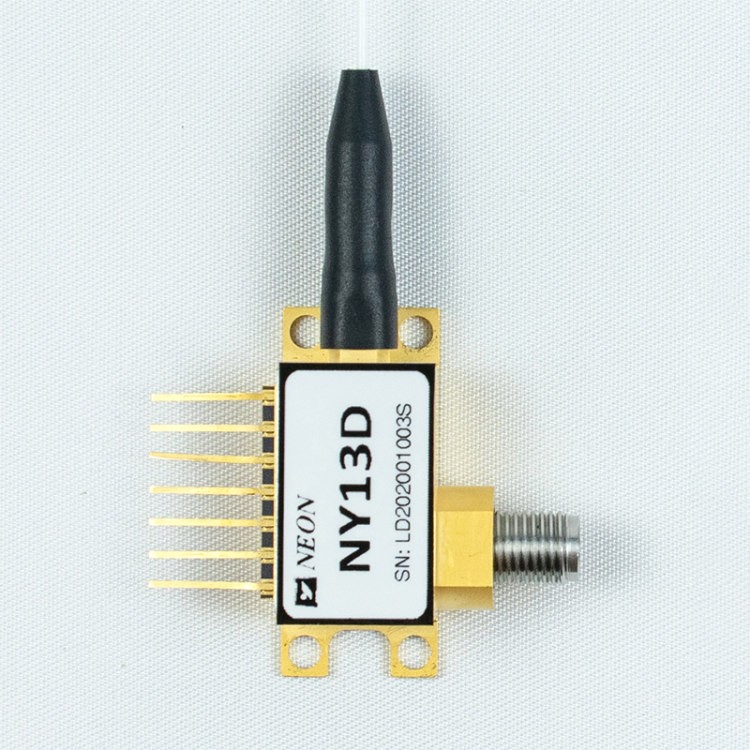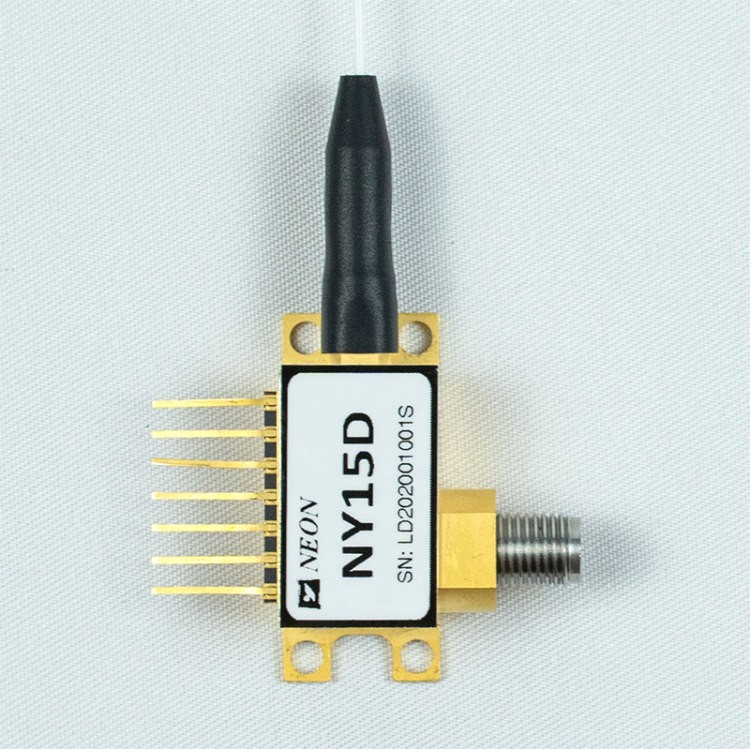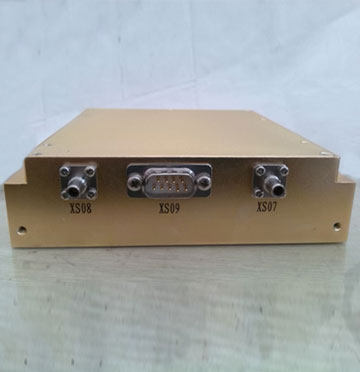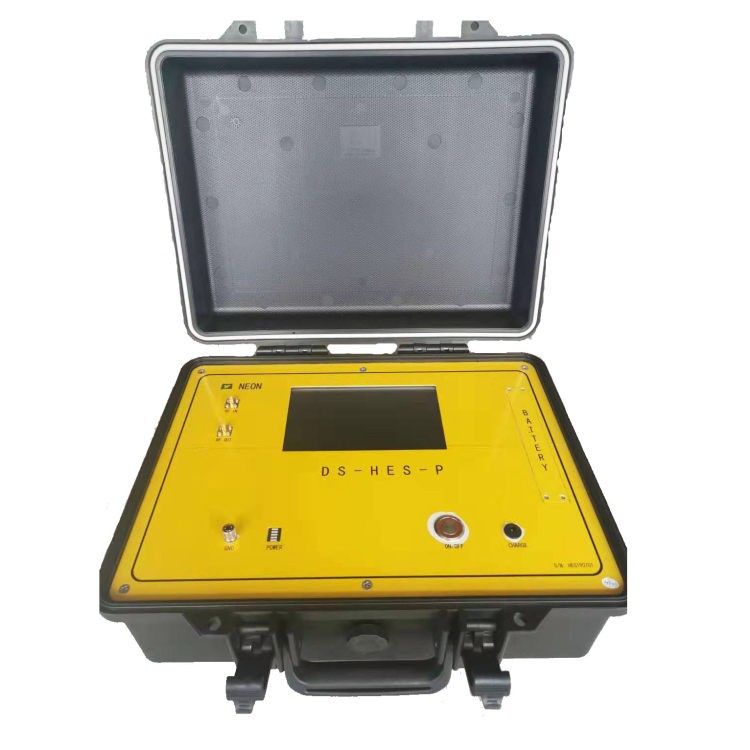4 Types Of Single-Frequency Laser Diodes
Many applications require the tunable single-frequency operation of the laser system. Among all diode lasers, there are currently four main configurations available for single-frequency output: external cavity laser (ECL), distributed feedback (DFB laser), volume holographic grating (VHG), and distributed Bragg reflector (DBR). All four configurations can provide single-frequency output through grating feedback. However, due to different grating feedback configurations, performance such as output power, tuning range, and side mode suppression ratio (SMSR) will also be different. Below we will discuss some of the main differences between these four single-frequency diode lasers, and give a summary at the end of the article.
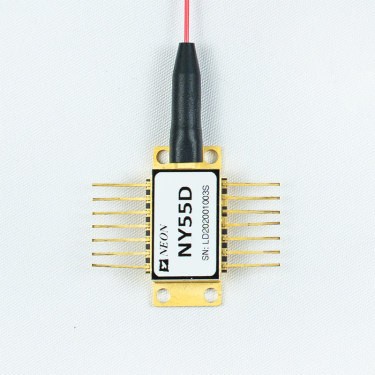
External cavity laser
The external cavity laser (ECL) is a versatile configuration compatible with most standard free-space diode lasers. This means that ECL can be used for many different wavelengths depending on the internal diode gain medium. As shown in Figure 1, a lens is used to collimate the output light of the diode and then incident on the grating. The grating provides optical feedback and selects a stable output wavelength. Through a reasonable optical design, the external cavity can only excite a single longitudinal mode, thereby obtaining a single frequency output with a high side mode suppression ratio (SMSR> 45 dB).
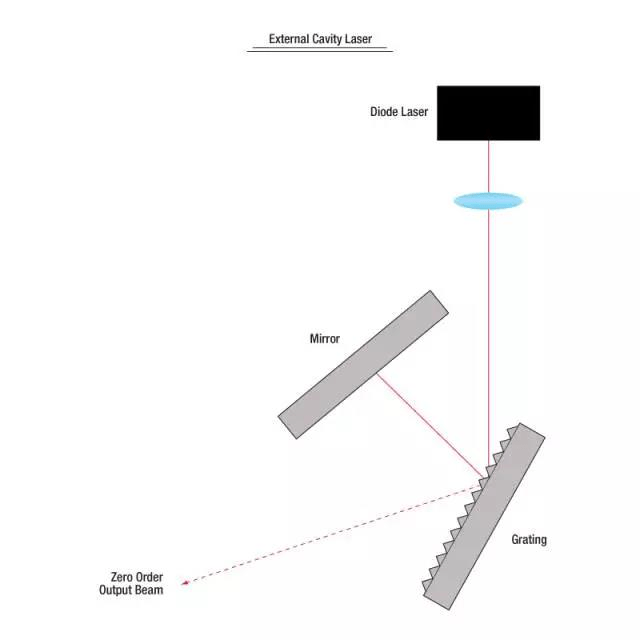
One of the main advantages of ECL is the use of a longer laser cavity to provide an extremely narrow linewidth (<1 MHz). In addition, because a variety of laser diodes can be integrated, ECL is also one of the few configurations that provide narrow linewidth emission for a blue or red light. ECL can provide a wide tuning range (>100 nm), but due to the mechanical design and the quality of the anti-reflection coating of the laser diode, ECL is also prone to mode hopping.
Distributed feedback laser – DFB laser
The distributed feedback laser ((DFB) integrates the grating inside the laser diode structure, as shown in Figure 2. This corrugated periodic structure is close to the active layer, which is equivalent to being used as a Bragg reflector, and a single longitudinal mode is selected as the excitation mode. If the gain of the active layer near the Bragg frequency is large enough, end mirrors are not needed. All-optical feedback and mode selection only rely on the Bragg reflector. Due to this “built-in” option, DFB can provide a single-frequency operation over a wide range of temperatures and currents. To assist mode selection and improve manufacturing yield, there is often a phase change layer in the diode structure of the DFB laser.
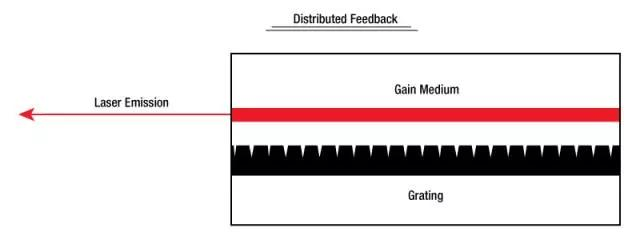
The excitation wavelength of DFB is approximately equal to the Bragg wavelength:

Where λ is the wavelength, Neff is the effective refractive index, and Λ is the grating period. By changing the effective refractive index, the excitation wavelength can be tuned. This is done by tuning the temperature and current of the DFB.
The tuning range of DFB is narrow: 2 nm @ 850 nm, 4 nm @ 1550 nm,> 2 cm-1 @ MIR (4.54-9.60 µm). But DFB can work with a single frequency in the whole tuning range, which means continuous tuning without mode hopping. Therefore, DFB is a common choice in practical applications, such as telecommunications and sensing. Because the cavity length of the DFB is quite short, the line width is generally between 1 MHz and 10 MHz. In addition, the tight coupling between the grating structure and the active layer results in a lower maximum output power than ECL and DBR lasers.
Volume holographic grating stabilized laser
Volume holographic grating (VHG) stabilized lasers also use Bragg mirrors, but there is a transmission grating in front of the output end of the laser diode, as shown in Figure 3. Because the grating is not part of the laser diode structure, there is no heat transfer with the laser diode, which can improve the wavelength stability of the device. The grating is usually a piece of photorefractive material whose refractive index changes periodically. Only the wavelength of light that meets the Bragg condition can be reflected into the laser cavity, resulting in a laser with an extremely stable emission wavelength. VHG stabilized lasers have higher power than DFBs, but have similar line widths and can lock wavelengths in a wider current and temperature range.
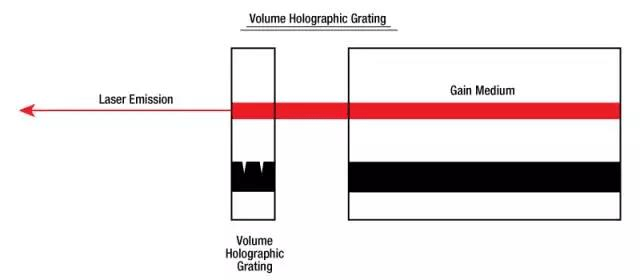
Distributed Bragg reflector laser
Similar to DFB, a grating structure is integrated inside the distributed Bragg reflector (DBR) laser. The difference is that the grating structure of the DBR is located outside the active layer, as shown in Figure 4. Generally speaking, DBR can be added to various levels that are not generally available in DFB to obtain greater control and tuning range. For example, a multi-electrode DBR laser can include a phase control layer to tune the phase independently of the grating period and diode current. When used together, DBR can provide a single-frequency operation over a wide tuning range. For example, the high-end sampled grating DBR laser has a tuning range of 30-40 nm. Unlike DFB, the output of DBR is not mode-hop-free; therefore, all inputs and temperatures must be carefully controlled at all times.
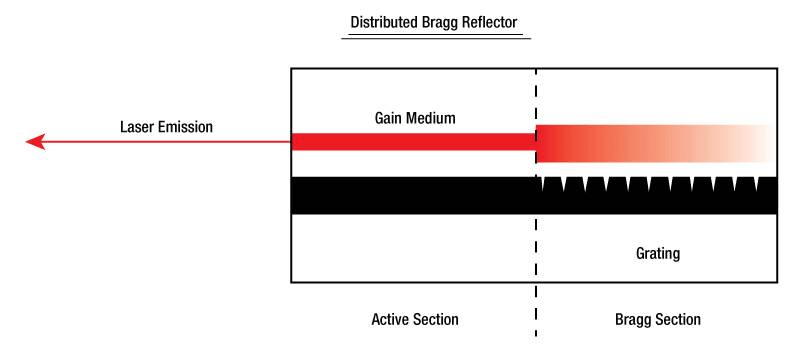
Compared with the complex structure of multiple electrodes, DBR also has a simplified version of a single electrode. This structure does not have complicated grating and phase control but reduces the tuning range. The tuning range of the simplified DBR is similar to that of the DFB, but there are more jumps caused by current and temperature. Despite the shortcomings of mode hopping, single-electrode DBR has advantages over DFB in some aspects, such as higher output power. The line widths of DBR and DFB lasers are similar. Currently, Thorlabs only offers single-electrode DBR lasers.
In Conclusion
ECL, DFB, VHG, and DBR laser diodes can all provide single-frequency operation within their respective design tuning ranges. ECL has a wider wavelength selection range than DFB or DBR. Although it is easy to hop, ECL is the narrowest (<1 MHz) of the three types. In a reasonably designed instrument, ECL can also provide a fairly wide tuning range (>100 nm).
The DFB laser is the most stable single-frequency tunable laser among the four types. It provides no mode hopping performance in the entire tuning range (<5 nm), so it is one of the most common single-frequency lasers in the industry. Due to the inherent properties of the continuous grating feedback structure, it has the lowest output power.
VHG lasers provide the most stable wavelength performance within a certain temperature and current range, and the power is generally higher than DFB lasers. Stability makes it an ideal choice for OEM applications.
Single-electrode DBR and DFB lasers have similar linewidth and tuning ranges (<5 nm). However, the single-electrode DBR will produce periodic mode hopping on the tuning curve.
NEON is a professional DFB manufacturer. We provide high-quality laser diodes. If you want to learn more, please visit our homepage, or contact our engineers on the homepage, and we will communicate with you in time.


